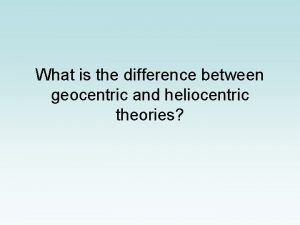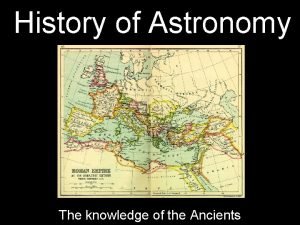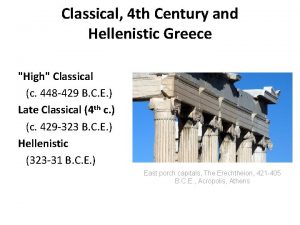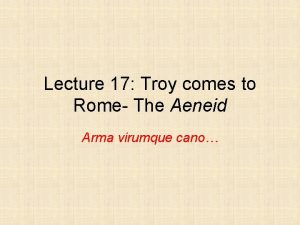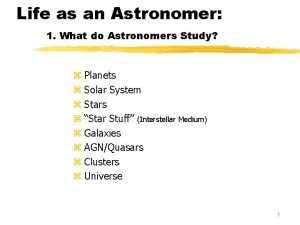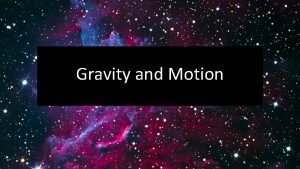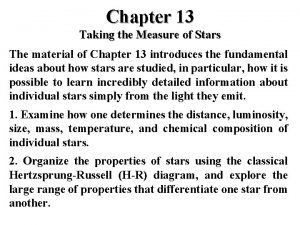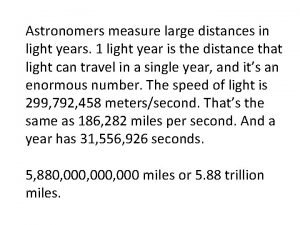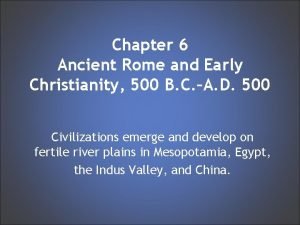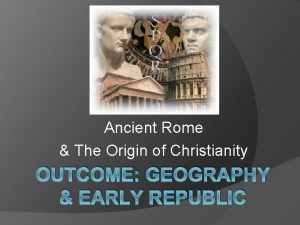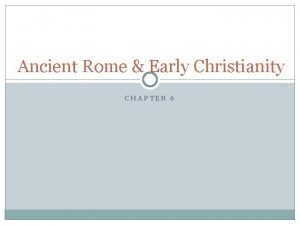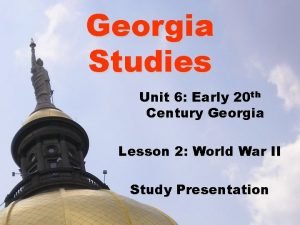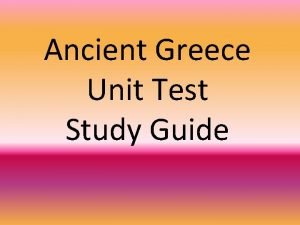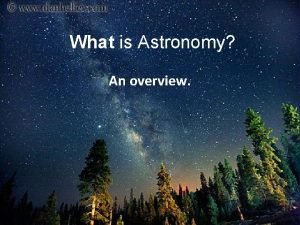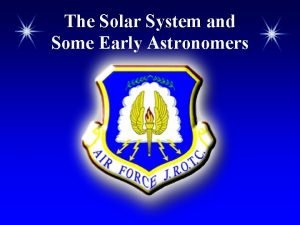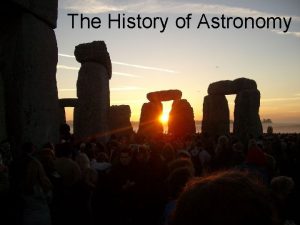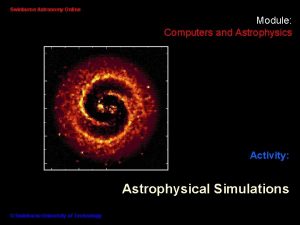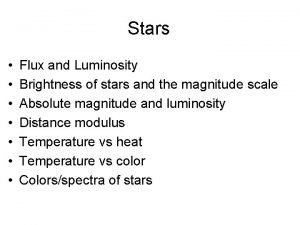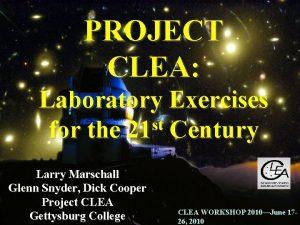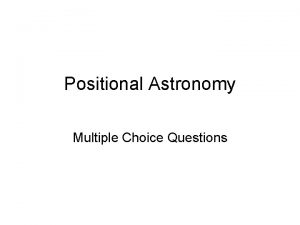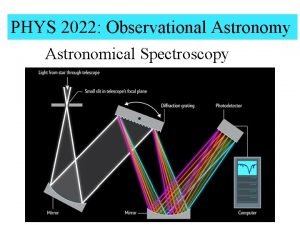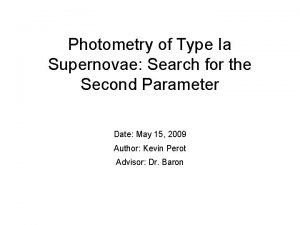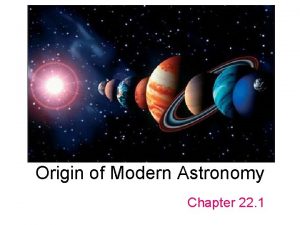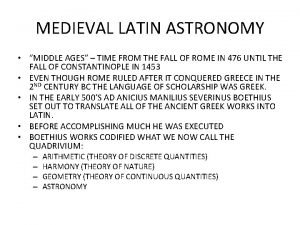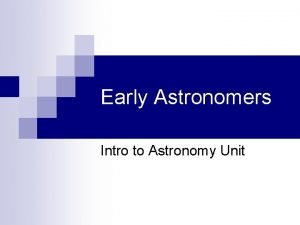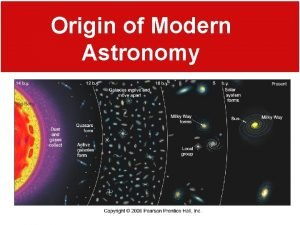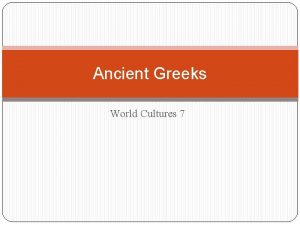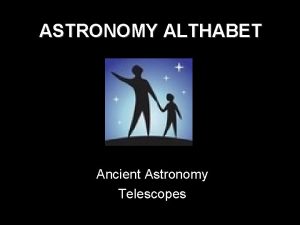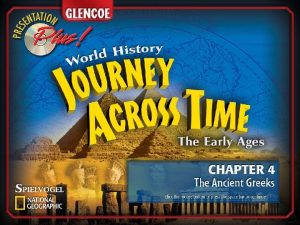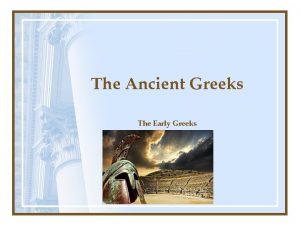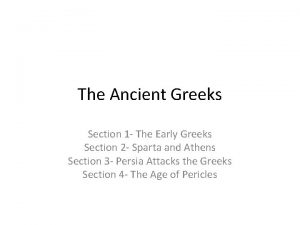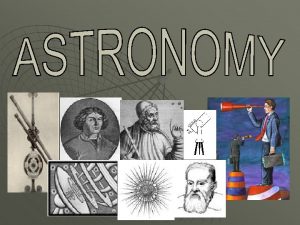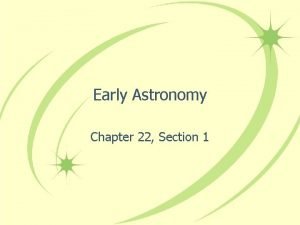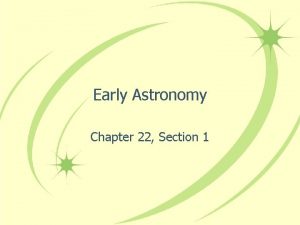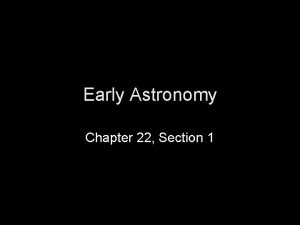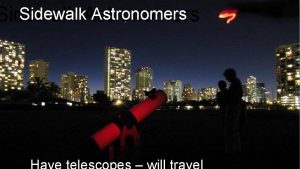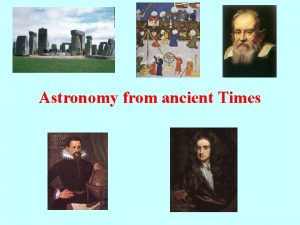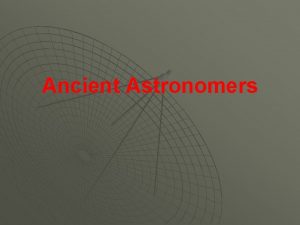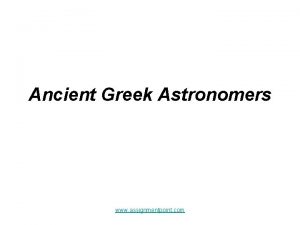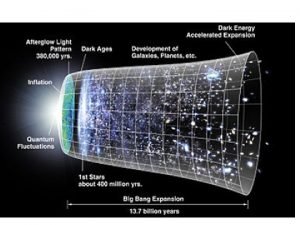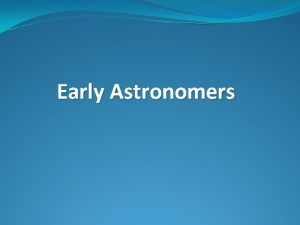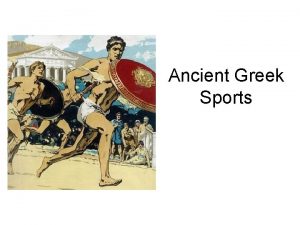Early Astronomers Intro to Astronomy Unit Ancient Greeks














































- Slides: 46

Early Astronomers Intro to Astronomy Unit

Ancient Greeks Biography n Aristotle (384 -322 BC) Aristotle Major Contributions n Earth is round

Claudius Ptolemy Biography n Greek n Lived ca. AD 83 -168 Major Contributions n Ptolemaic system – described movements of the planets n Problem: circular orbits n Predicted - Retrograde motion: apparent drift or movement of a planet as viewed from Earth n Geocentric model

Nicolaus Copernicus Biography n 1473 -1543 n From Poland Major Contributions n Earth as a planet n Model of the solar system with the sun at center n Used math to prove the heliocentric model. n Earth rotates n Circular orbits

Johannes Kepler Major Contributions Biography n Discovered 3 laws of planetary motion: n 1571 -1630 1) Planet’s orbit is an ellipse (oval) n Danish shape n Brahe’s assistant 2) The planets move faster when nearer the sun and slower when n Mathematical farther away n *New astronomy* 3) A planet’s orbital distance determines its distance from the sun n Defined the term astronomical unit as the average distance between the Earth and the sun (approximately 150 million km)

Galileo Galilei Biography n 1564 -1642 n Italian Major Contributions n Galileo used a telescope to make new astronomical observations 1. Four “satellites” or moons orbiting Jupiter 2. Planets are circular disks, not just points of light 3. Venus has phases just like the moon 4. The moon’s surface is not smooth 5. The sun has sunspots (dark regions)

Sir Isaac Newton Biography n 1642 -1727 n English Major Contributions n Described a force that extends from Earth into space that holds the moon in orbit around Earth n Formulated the law of universal gravitation n Explained the laws of inertia and gravity.

Contemporary Astronomers Edwin Hubble Major Contributions Biography n Explained that the universe n Born: 11/20/1889 was and still is expanding n Died: 9/28/1953 n Has a telescope that orbits in space named after him. The n American Hubble Space Telescope Stephen Hawking Biography n Born: 1/8/1942 n British Major Contributions n Theorized the existence of black holes.

Geocentric Model/Earth Centered Ptolemy

Heliocentric Model/ Sun Centered/Copernicus

Geo and Heliocentric Geocentric meaning Earth Centered was created by Claudiaus Ptolemy. He thought the earth was the center of everything in the Solar system. n Heliocentric meaning Sun Centered was created by Nick Copernicus and he thought and proved that the sun was the center of the solar system and every thing revolves around the sun. n

Astronomical Unit The time it takes for light to travel from the sun to earth is 1 AU. ABOUT 150 MILLION KILOMETERS……. n Light Year- The distance light travels in 1 year n Light Minute- The distance light can travel in 1 minute n Light Hour- The distance light can travel in 1 hour. n

Astronomy n Big Bang Theory is where a nebula cloud of rotating gases and rock; condensed, heated then cooled and collapsed. As a result this created our galaxy and solar system.

Big Bang Order of Formation n n As this cloud of gases and rock condensed and exploded, several things formed. The first thing that formed was the different Galaxies. There are 3 types of galaxies. Our Galaxy is the Milky Way. Yummmmm! The second thing that formed was the Sun. It provided heat for the planets, including earth. Next and last they earth began to take shape, form and grow.

Types of Galaxies

What is a galaxy? A galaxy is a huge cluster of stars, dust, and gas held together by gravity. n Large galaxies have more than a trillion stars while small galaxies have fewer than a billion. n Astronomers believe that there are billions of galaxies in the universe. n

Basic Types of Galaxies Spiral Elliptical Irregular

Spiral Galaxy Shaped like pinwheels n Sweeping “arms” made of gas, dust, and younger stars, rotate around the galaxy’s center called a bulge. n The bulge is a dense group of old stars n Our Milky Way Galaxy is a Spiral Galaxy. n

Milky Way Galaxy n Our solar system is located on one of the spiral arms called the Orion Arm. n All of the stars we see at night are part of the Milky Way Galaxy.

Elliptical Galaxies n Among the largest galaxies in the universe n Looks like a snowball n Contains mostly older stars that rotate around the center of the galaxy in an unorganized fashion

Elliptical Galaxy

Irregular Galaxies Least common type of galaxy n Smaller and shapeless n Contains very hot newer stars and older stars n May form when two galaxies collide n

Irregular Galaxy

Our 8 Planets Mr. Smith

The Sun Made of mainly gases. n Much larger than any planet in the solar system. n Creates the gravity needed to hold planets in orbit. n The sun is the only star in our solar system. All other stars are in our galaxy outside our main system. n As you look into the night sky, your seeing n

Continued……Sun The sun is made up of 6 parts; The Corona, Chromospheres, photosphere, Convective zone, radiative zone and the core. n When you look at the sun your seeing the Photosphere. n The Corona is the suns atmosphere n The Convective zone is where the gases circulate n

Continued……Sun Will the sun burn out or shrink? n Scientist have found out that the suns energy comes from nuclear fusion. n Fusion is the joining of two atoms to create energy. n The energy created from hydrogen atoms fusing creates helium atoms. It then gets sent into other layers and eventually reaches the surface in the form of light n

Sun

Mercury n n n n n 1 st planet from the sun Shortest revolution/year=88 earth days Rotation/day=58 earth days Rotates retrograde (clock wise) Much smaller than earth and the smallest planet Its atmosphere is made of Oxygen, sodium, helium Mercury is a terrestrial planet Terrestrial means the type of surface Mercury has little to no atmosphere and manly composed of Oxygen, sodium and helium. Temperature ranges from -297 at night and 872 degrees F during day.

Mercury

Venus- When a volcano meets a tornado! n n n n n 2 nd planet closest to the sun and the planet before earth. Most like the Earth Slightly Smaller than earth Retrograde rotation- Counter clockwise 2 nd fastest revolution of all planets Covered by a layer of clouds that trap heat and covered by volcanoes. Temperature=856 degrees F Atmosphere made of carbon dioxide(soda’s) Rotation= 243 earth days) Revolution= 224 earth days/ 1 venus year

Venus

Earth- The 3 rd rock from the sun! n n n n n Most complex planet with every system- water, air, land life. 5 th largest in solar system 23 degree tilt on axis 70 percent of earth is covered by water Mostly 0 -100 degrees Atmosphere 78% nitrogen and 21% oxygen 3 layers of surface- Crust, mantle and core Revolution= 365 days in Rotation=24 hours Prograde Rotation which means counter clockwise.

Earth and moon

Mars n n n n n Often called the Red Planet, Mars means God of War Known to have water in its polar area that is frozen. Atmosphere made of Carbon Dioxide Temperature ranging from -225 to 62 degree F. 7 th largest planet 4 th shortest year/4 th shortest revolution around the sun. Takes 1. 8 earth years. Has the Largest Volcano in the solar system called Olympus Mons, 15 miles high and 400 miles wide Rotation= 24 hr 37 min Revolution= 1. 88 earth years/ 1 mars year

Mars

Mars and its moons

Jupiter n n n n n Jupiter’s name means, King of the Roman Gods First of the Gas Giants and majority of the planet is made of gas/very little is solid. The largest planet in the solar system Rotation/day=9 earth hours Revolution/year=11. 8 earth years Atmosphere made of Hydrogen and Helium Has 28 moons. The 4 largest are called the “Galician Satellites” named after Galileo who found them. 318 times the size of Earth Known for having “the Great Red Spot” which is a Hurricane on the surface of Jupiter.

Jupiter

Jupiter's moons

Saturn

Saturn’s Moons

Neptune

Neptune’s Moons

Uranus

Uranus Moon’s
 Ancient greek culture values
Ancient greek culture values Difference between geocentric and heliocentric theory
Difference between geocentric and heliocentric theory Learning astronomy by doing astronomy
Learning astronomy by doing astronomy Learning astronomy by doing astronomy answers
Learning astronomy by doing astronomy answers Learning astronomy by doing astronomy activity 1 answers
Learning astronomy by doing astronomy activity 1 answers Astronomy in ancient rome
Astronomy in ancient rome Early greece map
Early greece map Which statement is accurate?
Which statement is accurate? Why did tyrants fall out of favor with the greeks
Why did tyrants fall out of favor with the greeks Roman floral designs
Roman floral designs Romans and greeks
Romans and greeks English georgian period floral design
English georgian period floral design Romans and greeks
Romans and greeks Greeks
Greeks Beware of greeks bearing gifts
Beware of greeks bearing gifts What tools did the greeks use in geometric constructions
What tools did the greeks use in geometric constructions Option greeks wikipedia
Option greeks wikipedia What do astronomers study
What do astronomers study Modern telescopes make it possible for astronomers
Modern telescopes make it possible for astronomers Astronomers measure the masses of stars by
Astronomers measure the masses of stars by Astronomers measure large distances in light years
Astronomers measure large distances in light years Early cpr and early defibrillation can: *
Early cpr and early defibrillation can: * Ancient india lesson 1 early civilizations
Ancient india lesson 1 early civilizations Ancient rome and early christianity chapter 6
Ancient rome and early christianity chapter 6 Early empires in the ancient near east
Early empires in the ancient near east Ancient rome outcomes geography and early republic
Ancient rome outcomes geography and early republic Ancient rome and early christianity chapter 6
Ancient rome and early christianity chapter 6 Ancient and modern means of communication
Ancient and modern means of communication Ancient india vs ancient china
Ancient india vs ancient china What is bivariate data
What is bivariate data Government unit 1 study guide
Government unit 1 study guide Unit 6 review questions
Unit 6 review questions Unit 6 early 20th century ga
Unit 6 early 20th century ga What was the main achievement of the maurya family
What was the main achievement of the maurya family Ancient greece unit test
Ancient greece unit test What is astronomy
What is astronomy Claudius ptolemy astronomy contributions
Claudius ptolemy astronomy contributions Astronomy greek roots
Astronomy greek roots Swinburne astronomy
Swinburne astronomy Mizar luminosity
Mizar luminosity Luminosity flux relation
Luminosity flux relation Clea exercises
Clea exercises Astronomy questions and answers multiple choice
Astronomy questions and answers multiple choice Phys2022
Phys2022 Distance ladder astronomy
Distance ladder astronomy Origin of modern astronomy
Origin of modern astronomy Astronomy in the middle ages
Astronomy in the middle ages

